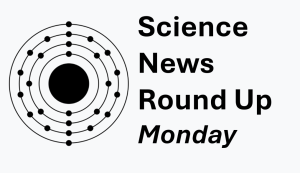
Wolves, But Make Them Data Scientists: The Algorithm That Outsmarted the Pack
Ever seen a wolf fine-tune a dataset? Now you have.
Okay, not literally. But if data scientists had spirit animals, the Grey Wolf might be a top contender—and now, it just got an upgrade. We’re talking about a new algorithm that mimics wolf pack behavior to solve one of big data’s biggest headaches: feature selection. And this new version? It learns fast, gets results, and knows how to say no to irrelevant noise.
Welcome to the wild world of GWO-SRS—the Grey Wolf Optimizer with a self-repulsion strategy.
The Big Data Problem No One Talks About
Behind every AI breakthrough or data-driven insight is a dirty secret: most of the data isn’t actually helpful. In massive datasets—like those used in healthcare, finance, or image recognition—only a fraction of the information is actually useful for making decisions.
That’s where feature selection comes in. It’s like decluttering your garage, except instead of tossing old paint cans and broken tools, you’re ditching irrelevant variables that slow your algorithm down and make your predictions worse.
But here’s the catch: sorting through thousands (or millions) of potential features is a classic “needle in a haystack” problem. You want your algorithm to be thorough—but not so thorough it burns out before it finds the good stuff.
That’s why researchers have turned to nature for help.
Enter the Wolf Pack
The Grey Wolf Optimizer (GWO) is an algorithm inspired by how wolves hunt in the wild. Think of it as a team effort: the alpha leads, betas and deltas assist, and omegas follow orders. Each “wolf” represents a potential solution, constantly updating its strategy based on the leader’s success.
Sounds cool, right? But the original GWO had two big flaws:
- It converged too slowly (think: hunting in slow motion).
- It got stuck in local optima—settling for “pretty good” instead of “best possible.”
That’s where GWO-SRS comes in. It doesn’t just follow the leader. It challenges the leader.
Wait… Wolves with Self-Repulsion?
Yes. And no, it’s not about social distancing.
In GWO-SRS, the alpha wolf doesn’t just tell the rest what to do. It also second-guesses itself. This is called the “self-repulsion” strategy. The algorithm takes its current best features—the ones it thinks are most important—and one by one, it removes them just to see what happens.
If performance improves? That feature was actually dead weight.
Think of it like a chef testing a new recipe and deciding, “You know what? Let’s try this without garlic. Or the tomatoes. Or the basil.” One version tastes better—boom, garlic’s out.
This self-check makes the alpha smarter and keeps the pack lean.
Hierarchy, Flattened: Because Bureaucracy Is Slow
Traditional GWO had a four-tier wolf pack structure. GWO-SRS flattens that to three: alpha, beta, omega. Why? So instructions move faster. No waiting for the delta to check in with the beta before telling the omega what’s up.
It’s like skipping middle management to get stuff done faster. Elon Musk would approve.
Transfer Functions and Tricky Math (But Let’s Keep It Fun)
In algorithms like this, transfer functions are like decision dice—they decide whether a feature should be in or out. GWO-SRS replaces the old, static dice with dynamic, time-dependent dice.
Early on, the algorithm favors “0s”—removing features to focus the search. Later, it starts adding features back in—refining the best solutions. It’s like Marie Kondo meets Sherlock Holmes: throw out everything that doesn’t spark performance, then revisit the suspects.
This adaptive style makes GWO-SRS a better balance of wild exploration and laser-focused hunting.
The Head Wolf Steals the Show
Here’s the final twist: in GWO-SRS, the head wolf doesn’t just lead—it plunders.
Instead of every wolf wandering around on its own, the pack uses a roulette-like system to swarm toward the alpha’s best features. But they don’t just copy-paste—they tweak, test, and adapt. It’s like a startup team rapidly cloning and improving on the CEO’s big idea.
The result? Faster convergence, fewer useless features, and smarter decisions.
Why This Actually Matters (Even If You’re Not a Data Nerd)
So what does all this wolf-talk mean for you?
- If you work in healthcare, it could mean quicker, more accurate diagnosis models based on fewer but smarter data inputs.
- If you’re in finance, it might help detect fraud with less computational overhead.
- If you’re just fascinated by AI, it’s another leap toward making machines not just faster, but smarter.
The numbers back it up: GWO-SRS reduced classification error by 15% and used 20% fewer features than competing methods in benchmark tests. That’s a big deal.
From the Lab to the Wild: What’s Next?
The researchers behind GWO-SRS aren’t done. Future plans include:
- Making the algorithm faster for ultra-massive datasets
- Using it in bioinformatics (think: gene data, personalized medicine)
- Testing it on noisy or imbalanced data (hello, real-world chaos)
The dream? Smarter algorithms that don’t just process data—they understand which parts of the data actually matter.
Let’s Explore Together
Science isn’t just about code or equations. It’s about curiosity, creativity, and asking: What if wolves were data scientists?
We want to hear from you:
- What’s the coolest nature-inspired tech you’ve seen lately?
- How do you think algorithms like this could change your industry?
- Ever been surprised by a “less is more” moment in your own work?
Drop a comment, share this post, and let’s hunt for better ideas—together.



